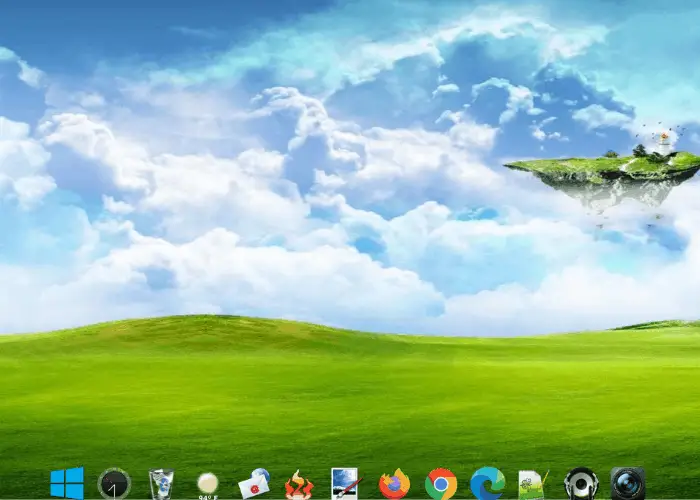

- WINDOWS 10 DOCK LIKE MAC 2016 MAC OS X
- WINDOWS 10 DOCK LIKE MAC 2016 MAC OS
- WINDOWS 10 DOCK LIKE MAC 2016 WINDOWS 7
These changes aren’t “form”, they are strictly “function”. The various changes are all based on solid data and research, and this shows when you first use it. The changes made make a lot of sense when you use them, and it took me little to no time to adapt to them. In that context, it doesn’t really make sense to differentiate between an application “launcher” and its taskbar entries.Īfter having used the new taskbar myself, I hardly call it form over function. Most Windows applications adhere to the single document interface concept these days, meaning that each window of an application appears to be a separate instance of said application. Icons on the taskbar become “representations” of applications, central points where you can manage the application’s windows, its functions, and its state. The result is dock-like behaviour: the taskbar now not only shows open windows, but also application launchers. One area where the taskbar really makes a step towards the dock is when it comes to allowing applications to ‘live’ in the taskbar, effectively integrating the quick launch area into the taskbar.
WINDOWS 10 DOCK LIKE MAC 2016 MAC OS
Close all Word windows in Mac OS X, and Word will still be running. Close all Word taskbar entries in Windows, and the application Word is no longer running. Consequently, it’s also one of the most common initial problems Windows users face when switching to Mac OS X. This may seem like a minor difference, but in fact, it’s one of the defining differences between the approach to documents and applications between Windows and Mac OS X.

This is different from the dock paradigm in Mac OS X, where each application gets an entry in the dock.
WINDOWS 10 DOCK LIKE MAC 2016 WINDOWS 7
Each window (except some dialogs – sadly) gets its entry into the Windows 7 taskbar, just like in previous releases. The taskbar in Windows 7 is still the taskbar that you know from Windows 95, 98, 200, XP, and Vista. If it looks like a duck, walks like a duck, and talks like a duck, it’s probably a duck, yes – but this one only looks like a duck it doesn’t walk or talk like one.

However, that doesn’t mean it also behaves like a dock.
WINDOWS 10 DOCK LIKE MAC 2016 MAC OS X
There certainly are a number of changes in Windows 7 that vaguely bring the Mac OS X dock to mind – jump lists, for instance, resemble the right-click menu on dock items, and the removal of text labels and increase in icon size make the taskbar look like the dock (you can change to small icons and text labels if you so desire). Are a few changes to the taskbar enough to make Windows OS X-like? Bloggers like Mary-Jo Foley, Paul Thurrot, and others seem to think so. While superficially they may have a point, the differences between Windows and Mac OS X are still glaringly obvious. Is Windows 7 leaning too much towards the Mac side of life? Many Microsoft bloggers are saying that it does, that Windows 7 is too much “form over function”, something they accuse Apple of.


 0 kommentar(er)
0 kommentar(er)
